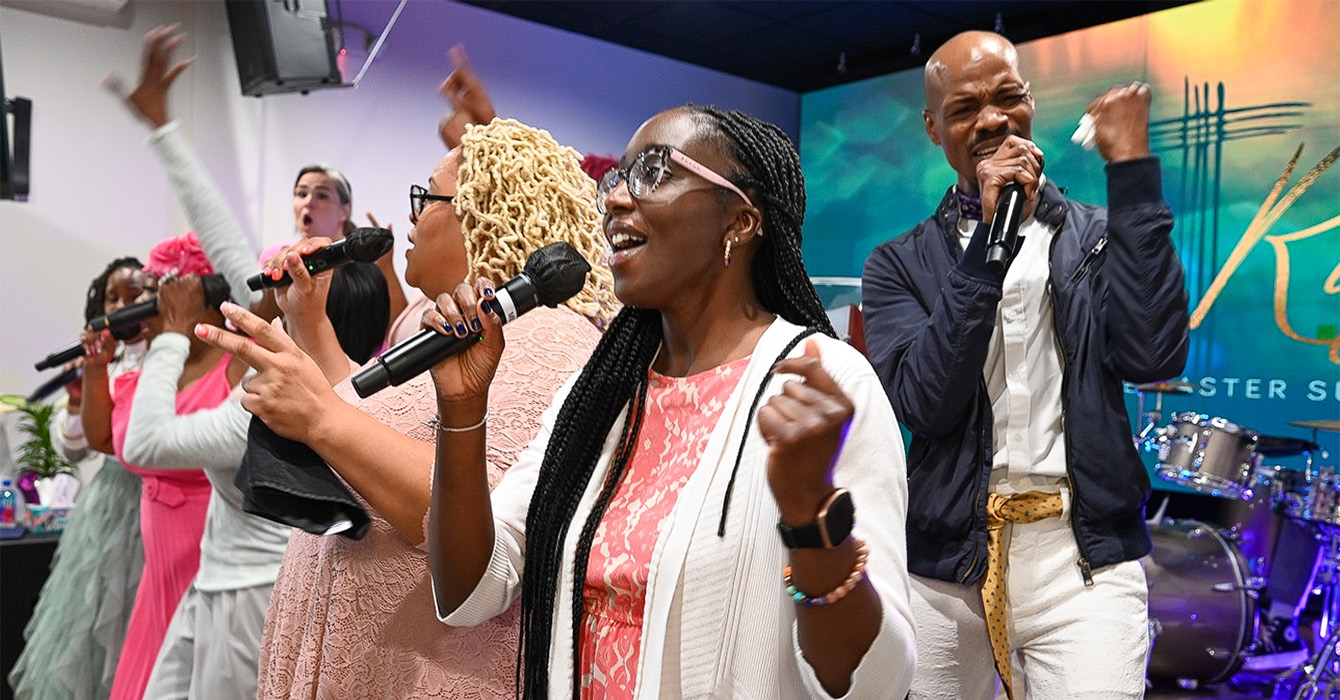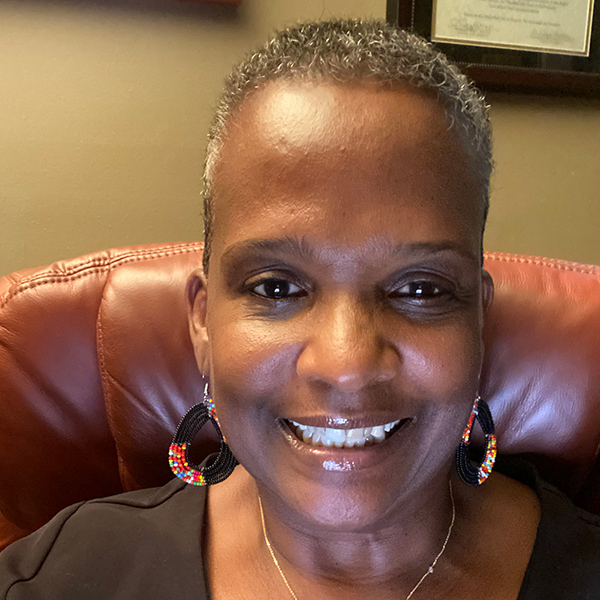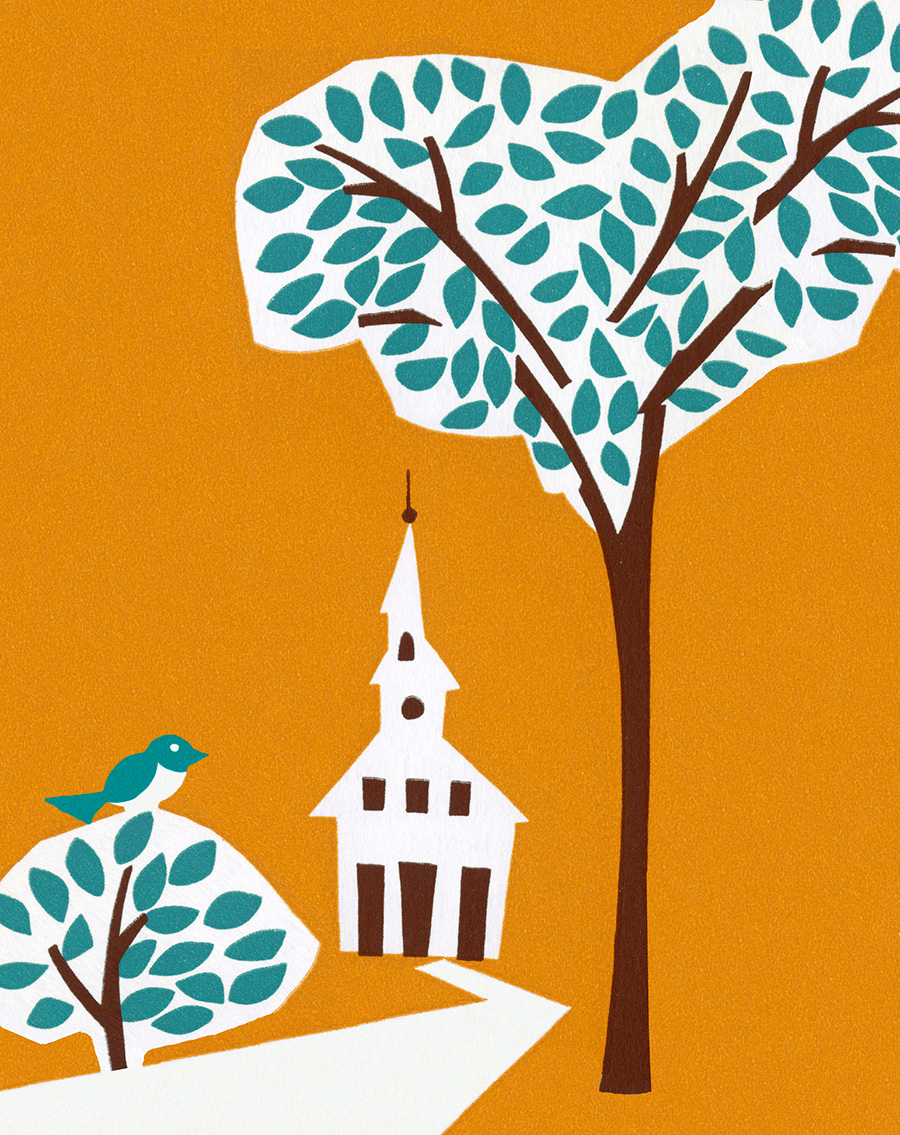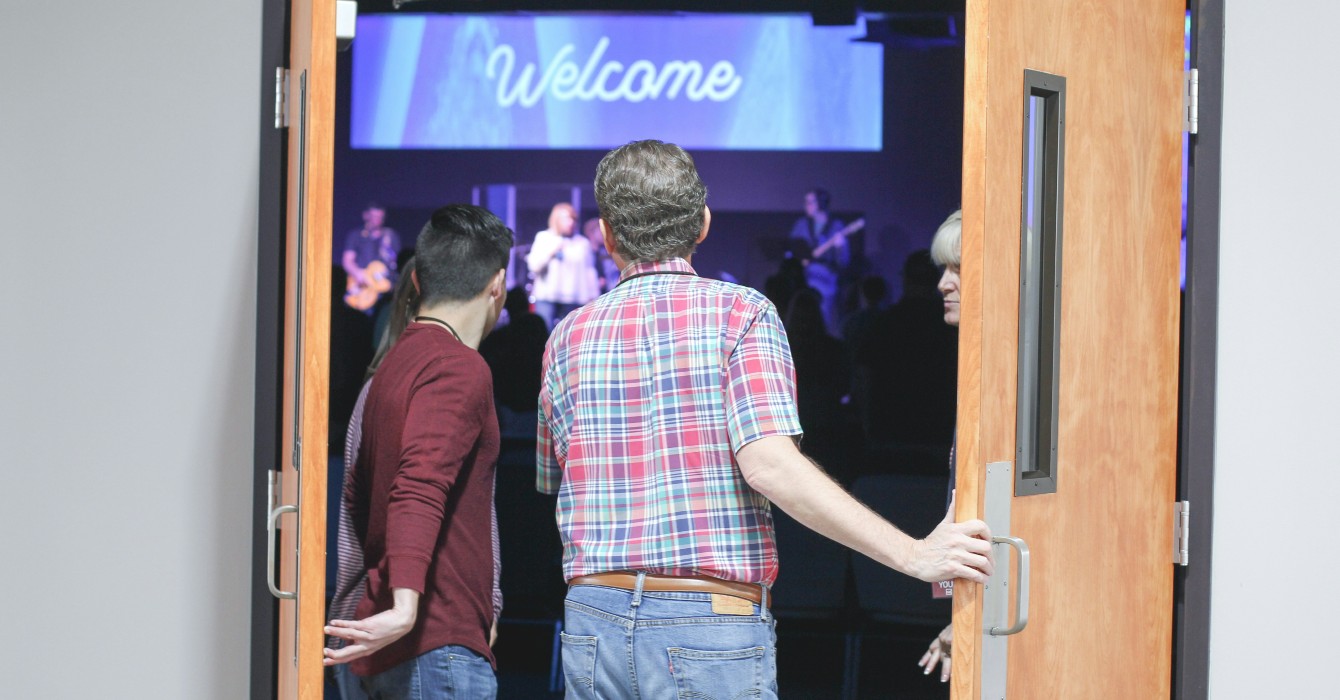The sermon came from the book of Matthew, chapter 14, verses 25-33, the part where Jesus walks on water, much to his disciples’ astonishment.
The youthful-looking pastor couldn’t help making the connection between her congregation and Jesus’ miracle. It was right there for the taking, happening in real time.
“There’s good news for water walkers. … C’mon, New River, we’re water walkers!” declared the Rev. Eustacia Moffett Marshall, the senior pastor of New River Presbyterian Church in Philadelphia, at a recent Sunday service.
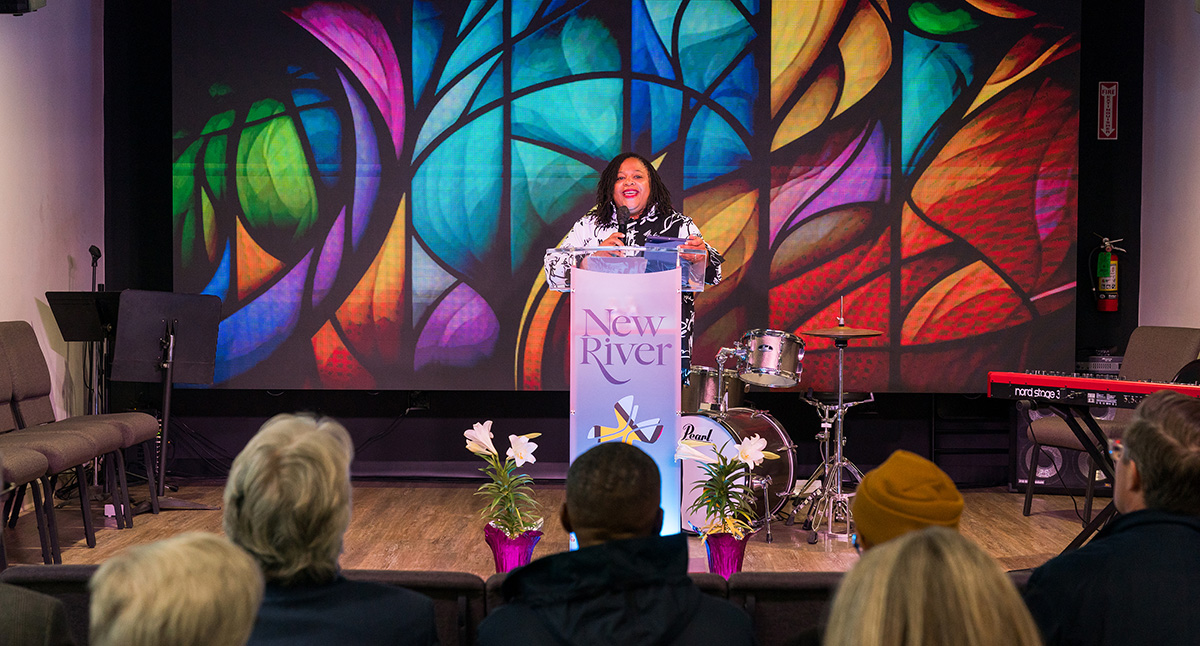
It was an apt metaphor for the members of New River, which derived its name from three streams — representing three different churches — that came together to make one new congregation. Indeed, New River’s long and sometimes arduous journey of bringing three churches together as one has been an exercise in faith building.
The creation of New River — a marriage of First African Presbyterian Church, Calvin Presbyterian Church and Good Shepherd Presbyterian Church — has been nothing short of a miracle.
“I always dreamt we could do something, but the way it played out was far bigger than anything we could have dreamt at the time,” said the Rev. Ruth Faith Santana-Grace, the executive presbyter of the Presbytery of Philadelphia, which oversees churches in four counties.
“If you’re open to dreaming, God does extraordinary things.”
On a recent Sunday morning, a congregation of about 60 — and more online — gathered at the old First African Presbyterian Church, now the home of New River. In a temporary worship space while their historic sanctuary is undergoing major restoration, a quartet of singers, backed by a trio of musicians, uplifted the service with contemporary gospel music. Once the sanctuary is finished, this airy, light-filled room will serve as the church’s broadcast studio.
“We know we’re now in a world where you have hybrid worship,” Marshall said. “So we created a studio that you could use to broadcast worship but you can also use to do performing arts.”
Is there an image that helps define your congregation’s mission?

‘We were barely keeping the lights on’
A decade ago, it was hard to imagine three different churches with three different histories and three different worship traditions transitioning into one. For many people, tradition is tied up in belief and tethered to institutions. Old habits die hard, even as edifices are literally falling apart.
Such was the challenge faced by First African Presbyterian and Calvin Presbyterian, two west Philadelphia churches with storied histories and proud congregations but deteriorating buildings and dwindling membership.
First African Presbyterian Church was the mothership. Founded in 1807 by formerly enslaved Tennessean John Gloucester, it was the first African American Presbyterian church in the nation — among five early African American churches founded in the city of Philadelphia. Its membership is equally rich in history: First African counts Underground Railroad conductor William Still, abolitionist and activist Octavius V. Catto and Tuskegee Airman Donald Harris among its past members.
Marilyn Williams, an elder at New River, held membership at First African almost all her life. Now 72, she remembers worshipping there with her parents.
“In the early years, it was really great to grow up there as a child,” Williams said. “We had Girl Scouts; we went to overnight camp. There were a lot of activities.”
As the years went on, membership had dropped from its peak of about 200 to about “30 or 40” by 2000, Williams guesses. The church’s hard-and-fast traditions didn’t gain it any new members in the new millennium. White-gloved ushers once viewed as stately were now considered stuffy.
But even more distressing was the state of the building.
“We needed a new roof in the sanctuary. There was one side of the sanctuary where we couldn’t sit, because the roof was leaking so bad that the water was rotting the floors,” Williams said. “And we couldn’t turn the heat up too high, because you didn’t want a high gas bill.”
Blocks away at Calvin Presbyterian, much the same was happening. Elder Lorraine McKenzie, 65, remembers Calvin as being a community hub that anchored her neighborhood. But like First African, it saw membership and resources decline over the years.
“We were struggling financially,” McKenzie said. “We were barely keeping the lights on.”
Does your congregation have buildings or other assets that are in disrepair? Could that motivate you to seek out more partners?
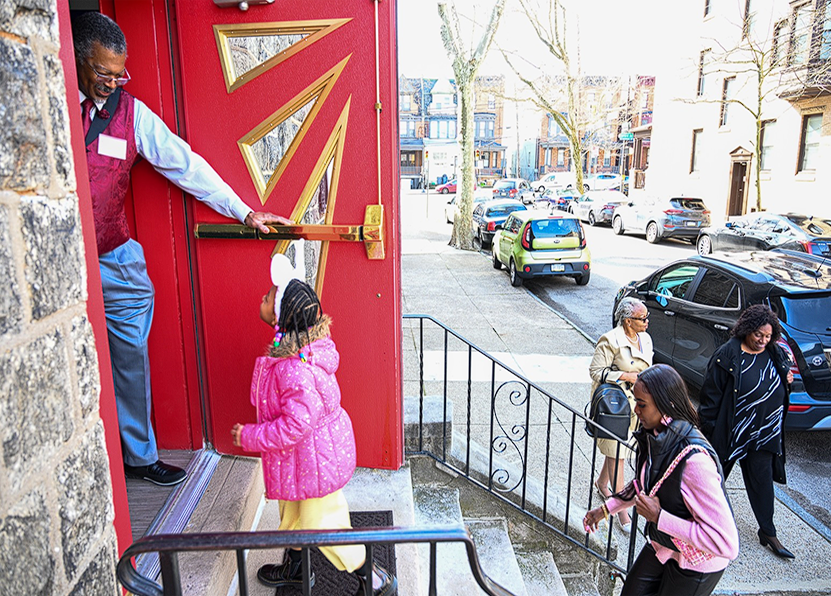
The idea of First African and Calvin forming one church wasn’t new. Some 20 years ago, the churches were first approached with the idea of merging with three other churches as part of a five-church partnership.
The Rev. Kevin Porter, the stated clerk of the Presbytery of Philadelphia, was in on that process and remembers having deep conversations with the church elders about what a partnership could look like.
“It would be a boutique model, where maybe one church would focus on youth, one would focus on seniors, but they would share a pastor,” he recalled.
“But when it came to the come-to-Jesus moment,” Porter said, “the churches pushed away from the table.”
“No one wanted to leave their facility,” McKenzie said, remembering the general reluctance everybody felt during that time.
“A lot of them were open to partnering with others, but they were saying, ‘It would be great if you could come and join us,” Porter said. “That was always the stumbling block.”
Fast forward to 2016, and Calvin and First African were wandering through the wilderness, with myriad building problems and no permanent pastoral leadership. In fact, there was talk of closing First African altogether. The presbytery was committed to doing everything in its power to keep the mother church afloat, Porter said, while knowing that “the one building, one pastor, one congregation model” would never be sustainable.
By 2016, the presbytery had been meeting monthly with the elders from First African and Calvin for a couple of years. “It made sense to see if we could do something new,” Santana-Grace, the executive presbyter, said. “Could we rebirth something with this small, faithful remnant?”
They called themselves the West Philadelphia Presbyterian Partnership. This time around, the feeling was more receptive, more collaborative, and much more Spirit-centered.
“During those moments, our devotional time was about where God would be calling us to be, and what would be the challenges,” Santana-Grace said.
“I didn’t have a lot of concerns,” Williams said. “I got along with everyone from Calvin. I had a good feeling about it.”
What ideas are percolating in your congregation? What is needed to act on them?

Destruction leads to rebirth
What really sparked the fusion of the churches that became New River was an experience of destruction — a fire that gutted the third church, Good Shepherd.
Entirely different in scope and witness, Good Shepherd was a multicultural church with a tiny membership and an outward-facing ministry. With a congregation of only seven people, Good Shepherd shared its 100-year-old building with various other faith communities. It used its manse for classrooms for a nearby elementary school and its annex for a day care center. The church had an open-door policy for anybody who needed it.
But in the early morning hours of Aug. 29, 2016, fire ravaged the Good Shepherd building, devastating the community. The church received $5.5 million in insurance money, with which Good Shepherd initially intended to rebuild. But financially, rebuilding for seven people just wasn’t feasible, Santana-Grace said.
Presbytery officials suggested that Good Shepherd partner with First African and Calvin but didn’t press the issue. They allowed Good Shepherd the space and time to come to their own decision and “have agency over their journey,” Santana-Grace said.
Still, folks at Good Shepherd were skeptical. They’d heard about the presbytery’s reputation of being a bureaucracy, quick to close down struggling churches.
“I was a little leery, to be honest,” said Jim Taggart, a Good Shepherd elder at the time. “We had come into some money from the insurance, and people were saying, ‘Don’t let them steal your money.’”
In the end, reflecting on God’s providence and drawing on common sense, they felt ready to make a decision. In September 2018, Good Shepherd agreed to join the partnership and bring their insurance money with them.
“I could have given a party that day,” Santana-Grace said. “I was so grateful.”
If there is a need for a rebirth, how can that new organization remain faithful to the past?
Finding the right pastor
The decision was a game changer. The $5.5 million could now be earmarked for a competitive salary for a new pastor and renovations for First African, which the elders decided would be the home of New River.
Now that the three “streams” had become one, the next step was to find a pastor, one with the vision and leadership to take over a unique and, in many ways, fragile congregation.
After a nationwide search, they found their perfect candidate. Marshall, 45, a native of Oakland, California, was a graduate of Stanford University and Princeton Theological Seminary. She hailed from a high-achieving family — her mother is also a Presbyterian minister. But she was as streetwise as she was erudite.
“You know, people say Presbyterians are the ‘frozen chosen.’ They have this idea of Presbyterians being very quiet. I didn’t grow up like that,” Marshall said. “That’s not the kind of preaching I do.”
Marshall’s roots in liberation theology were perfect for a place like Philadelphia and the church’s predominantly African American neighborhood, where 50% of residents live below the poverty line.
The prospect of pastoring in Philadelphia appealed to Marshall, who was serving as a bridge pastor for a church in North Carolina at the time.
“Remember, I’m from Oakland, California, so when I got to Philadelphia, in an urban environment, it felt like home,” Marshall said.
“I saw the blight,” she said, “but also, for me, there was a sense of beauty with the reality of knowing that this is exactly where Jesus is going to be hanging out.”
After meeting with the elders from all three congregations, Marshall was persuaded that she was the one who could take on the challenge.
“They were really committed to something, and they had that sense of call that drew me,” she said. “They inspired me. I knew this was more than just some people trying to save some buildings and trying to hold on.”
Are there histories that prevent collaboration in your context? How can you understand and navigate them?
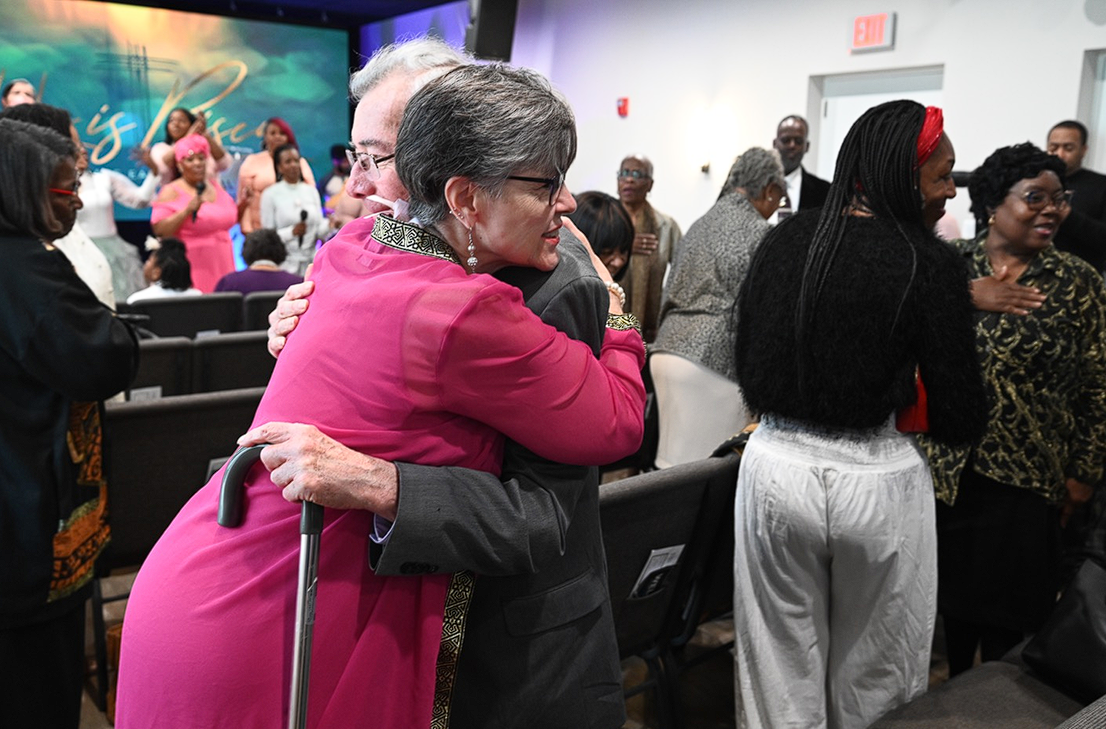
Lessons from the pandemic
Marshall arrived in 2019, and in the winter of 2020, COVID hit — certainly less-than-perfect timing for the new pastor and her fledgling congregation. The pandemic forced worship services online for three years.
The church spent most of that time organizing and “incubating,” as Marshall describes it. The time was crucial to understanding members’ different and distinct personalities — and, more important, what they had in common.
“All three churches had a social service kind of ministry over the length of their tenure,” Marshall said. “So for them, the gospel was embedded in how people were being treated in the neighborhood and those kinds of things.”
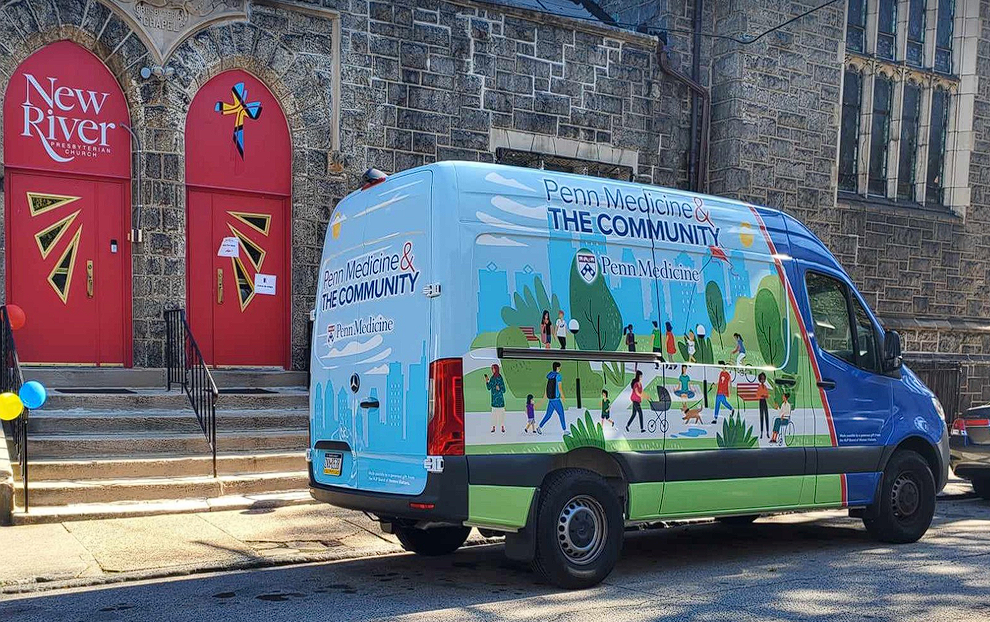
“I learned that this is a group of people committed to living out their faith in the community.”
It was during that time that the three streams coalesced, and the congregation came up with the name New River.
“A strange grace happened during the pandemic for us,” Marshall said. “It was like God used the opportunity to show us that while buildings matter, we are more than our buildings and the church and its people.”
Since Marshall’s arrival, New River has experienced a bounty of blessings.
The church recently closed on a senior affordable housing complex on the old Good Shepherd site. At the same time, the church is raising funds to acquire 13 lots next-door to New River to build more affordable housing, along with commercial space.
New River also was one of eight Black churches in the city to receive a grant to restore its sanctuary. The funding, from Partners for Sacred Places, the Preservation Alliance for Greater Philadelphia and the Philadelphia Fund for Black Sacred Places, is designed to help preserve historic architecture by moving beyond immediate repairs to long-term sustainability.
Philadelphia interior designer Kia Steave-Dickerson, best known for her work on the reality show “Trading Spaces,” was hired to reimagine the facility and create spaces that not only serve the congregation but serve the community.
The goal, says Marshall, is for New River to be self-sustaining so that it can better serve people and the neighborhood. Marshall believes that if New River continues to flow in God’s direction, the blessings will continue.
“There really has to be a sense of call, a sense of common mission, a sense that there is something God would have us to do that we can do better together, that we can’t do by ourselves,” she said. “God has to be the one to grow the church. God has to grow our hearts. … God has to grow us up.”
Questions to consider
- Is there an image that helps define your congregation’s mission?
- Does your congregation have buildings or other assets that are in disrepair? Could that motivate you to seek out more partners?
- The merger of the three churches was discussed for two decades until the time was right for action. What ideas are percolating in your congregation? What is needed to act on them?
- If there is a need for a rebirth, how can that new organization remain faithful to the past?
- Are there histories that prevent collaboration in your context? How can you understand and navigate them?

